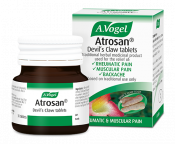An introduction to lower back pain
The lower back (or lumbar region) is a very important part of the body. It provides structural support, protection of organs and also helps us achieve the wide range of movement we are used to.
Lower back pain is a common problem and is the most frequent form of back pain. It is estimated that up to 80% of people experience pain in the lower back at some point in their lives.
In most cases, pain is mild and the condition is not serious, rectifying itself within a few days. However, for some, lower back pain can be a chronic problem affecting quality of life.
What causes lower back pain?
The cause of lower back pain is often very difficult to identify and arises as a result of a variety of factors.
Soft tissue damage - most often, pain is caused by a disruption to the normal functioning of muscles, ligaments, cartilage or any of the other tissues in the lower back. Sometimes this is mild and simply known as back strain. Medically, this is referred to as non-specific lower back pain as there is no clear identifiable cause. Although not a serious problem, it may still result in very considerable discomfort and limitation of movement. It is likely that this type of lower back pain will heal itself within a few days to weeks.
Nerve damage - in other cases, pain may be caused by disruption or pressure to nerves in the back. This is referred to as nerve root pain or sciatica and occurs when one of the spinal nerves gets irritated, pressed upon or ‘trapped’, giving rise to the term ‘trapped nerve’. Pressure on the nerve root not only leads to pain. It can also cause more alarming symptoms such as numbness or pins and needles in the buttock and legs.
Lifestyle factors – various lifestyle factors can contribute to lower back pain. These may be simple and obvious, or more complicated, but in all cases can have a significant impact. Factors which a doctor may consider include:
- Bad posture
- Sitting awkwardly for long periods
- Being overweight
- Lifting heavy objects
- High stress levels
Other causes – There are some rarer causes of back pain, most of which are serious medical conditions. After eliminating all other causes of back pain, your doctor will consider these. Examples include arthritis, infections, bone disorders and cancer.
What are the symptoms of lower back pain?
The main symptom of lower back pain is an ache, tension, stiffness, muscle tightness or cramp in the lower back which interferes with everyday activities. For many, symptoms will appear and resolve within a short time with the help of painkillers or exercise. However, lower back pain can also give rise to symptoms such as:
- pain radiating down the front, side and back of the legs
- pain increasing with activity
- headaches
- anxiety
If you experience these symptoms and they lead to a significant interference with your lifestyle, you should seek professional advice. Furthermore, you should also seek the advice of your doctor if you experience lower back pain along with the following symptoms:
- numbing and weakness in the legs
- fever
- swelling or inflammation
- depression
- incontinence
- blood in urine
Left or right side?
Many people experience lower back pain, only on one side. Most often this is because you have stretched the muscle or ligaments on one side of the body but not the other. This type of situation arises from sitting incorrectly, carrying or stretching with one hand and not the other, or sleeping in an awkward position.
However, there are medical conditions which may result in pain being in one side of your back and not the other. For example, appendicitis will cause pain in the lower right side and not the left, although the pain is most commonly at the front of the lower abdomen. If you are suffering from kidney problems, gall stones or a slipped disc, you may experience back pain on one side of your body.
Treatment of lower back pain
There is a range of treatments available for lower back pain, although often it is important to understand the cause of the problem before an effective solution can be found. Treatments come in different forms:
- Conventional medicines – these are medicines available over-the-counter from your pharmacist or on prescription from your doctor. Most often these will include pain-killers, muscle relaxants or anti-inflammatories.
- Home remedies – there is a range of measures which you are able to employ at home, such as taking regular gentle exercise like walking, swimming or back exercises. It is often important to improve your posture, and if you are overweight, a weight loss programme may also help.
- Herbal remedies – many people find that herbal remedies are effective, either by themselves or along with other medication. Arnica gel can be applied externally to the painful area and helps with inflammation and pain. Devil’s Claw is effective for general joint pain and is taken internally.
- Complementary medicines – this can be used alongside other types of medication or on their own. It covers a range of practices and techniques such as acupuncture and chiropractic treatment.








